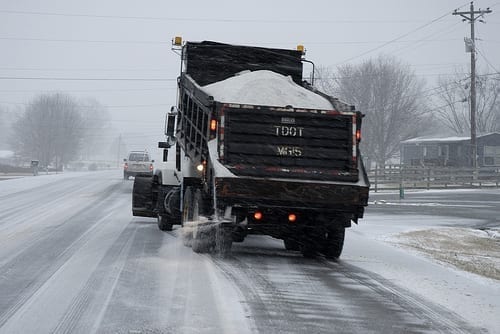From Michigan to North Carolina to tiny Sandbranch, TX, contaminated water is turning up all over. We can’t afford to fix it – but we can’t afford not to.
The globe is awash in water. Seventy percent of the Earth’s surface is covered by the stuff, making it hard to believe that a crisis is unfolding. Yet only 2.5% of that is fresh water, and only part of that water is accessible for thirsty people. The rest is saltwater, filling the oceans but not suitable for drinking. As the population rises and freshwater supplies dwindle, it’s increasingly important for us to treat our potable water like the treasure it is. Unfortunately, contaminated water and crises both small and large threaten our supply, with the situation likely to worsen in the future. What’s going on?
In western Michigan, some residents of Kent County have been drinking chemicals once used to waterproof leather. According to Lynn McIntosh of Concerned Citizens for Responsible Remediation, a tannery that once belonged to Wolverine Worldwide and which makes shoes for popular brands like Hush Puppies and Stride Rite, has been dumping both liquid and solid waste illegally for decades. Out of 900 homes where the water was tested for per- and polyfluoroalkyl substances (PFAS), 30 turned up positive, including one home where the water was 28 times the EPA advisory level for PFAS. The situation is ongoing.
Brighton Township, in southeastern Michigan, is home to the General Motors proving grounds. For more than 30 years, GM de-iced their roads and testing areas with road salt, just like other municipalities throughout the snow belt. A class action suit brought by local residents alleges that the tons of salt that GM used over the decades contributed to the contaminated water in nearby wells. In 2005, the Michigan Department of Environmental Quality told residents that their wells contained unsafe levels of sodium chloride. GM, of course, denies responsibility, pointing out that salt is widely used for winter road maintenance. It’s worth noting, however, that habitual use of road salt doesn’t necessarily mean that it’s safe. It doesn’t disappear as the ice melts. Salt finds its way into lakes and streams, harming wildlife. Increased salinity from road salt affects drinking water for many communities, but it’s deemed necessary to clear roads – and test tracks – throughout the North.
While GM is at least responding to the locals, an alleged polluter in North Carolina has nothing to say. Chemours Co., based in Delaware, is believed to be discharging an unregulated chemical called GenX into the Cape Fear River near Fayetteville, NC. GenX, used to make Teflon (among other products), has turned up in fifty private wells in the area as well as a water treatment facility about 100 miles downstream. When locals received notices from Chemours that their wells needed testing and that they’d be receiving bottled water arranged by the company, they were naturally concerned: perhaps this was the chemical that had been causing cancer in humans and dogs. Chemours, however, has remained mum, not addressing residents’ inquiries and even skipping legislative hearings regarding health concerns related to the contaminated water. After all, lawsuits are expensive, even if apologies are free.
Michigan and North Carolina aren’t the only states with contaminated water. While the water troubles in Flint, Michigan, have made national headlines, communities with levels of lead in their water just as high or higher than those in Flint have popped up across the United States. Failing infrastructure, like lead water lines, needs to be replaced in dozens of cities and towns. Unfortunately, the improvements we made in times of prosperity cannot be maintained as the tax base crumbles, breaks are given to the most wealthy, and the poor are written off.
Video courtesy of Eric Williams, via YouTube.
That brings us to the town of Sandbranch, TX. Sandbranch once had a population of 500 and cool, fresh groundwater. Wells were vital for residents of this tiny town with no water infrastructure. During the 1980s, their wells went bad. Bacteria in the contaminated water could be from local gravel mines, or perhaps the pigs. Nobody knows. Either way, Sandbranch residents now must rely on bottled water, much of it supplied through their church. This area is poor, with an average monthly income of $720, so neither buying an endless supply of bottled water nor moving away seem affordable to many. Since the town sits on a floodplain, regulations prevent new construction, avoiding another disaster like Hurricane Harvey. Inability to develop closes like a noose around the town, shrinking the population and keeping away economic development, both a blessing and a curse.
Fresh water is vital for life. However, that doesn’t mean people will take care of it, especially when economic growth is seen as equally vital and water can always be brought from somewhere else. With contaminated water turning up in so many places, though, we’re running out of “somewhere else.” If we want change, we’re going to have to figure how to turn the system around ourselves.
Related: Water Contamination: Not Just in Flint


Join the conversation!